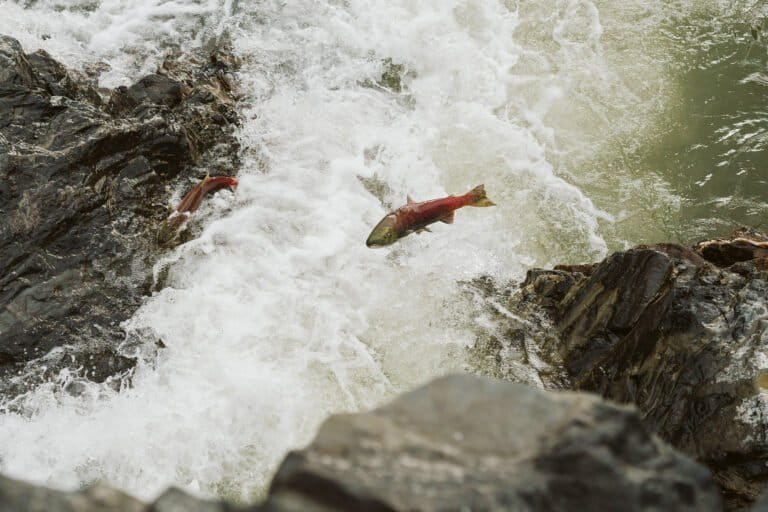KANNIYAKUMARI, India — Anthoni Dhasan, 47, sits on the deck of his fishing boat at the harbor of Thengapattanam in Tamil Nadu, India’s southernmost state, peering out at the stormy…
Indigenous peoples and local communities are already feeling the impacts of climate change, according to firsthand accounts documented in a new study. The authors of the paper, published in the…
TOKYO — The train to the farm rose from Tokyo’s labyrinthine subway network, revealing a hodgepodge of gray and tan buildings stretched on either side. The world’s largest metropolitan area,…
American agroforestry initiatives got a big boost of funding in 2022 from the U.S. Department of Agriculture (USDA), which allocated $60 million to help farmers transition toward this style of…
While wind turbines and solar panels multiply across the Brazilian dry forests, Tião Alves insists on tin windmills and PET bottle-based heaters. "Backcountry technology," as he defines it, arguing that…
In some ways, village life on Oman’s Jabal Akhdar Mountain is the same as it has always been. Water still runs through the ancient aflaj channels. People still cultivate pomegranates,…
A machine learning model of ammonia emissions from the world’s rice, wheat and corn crops shows that optimal fertilizer management could slash ammonia air pollution from these crops by 38%.
It’s estimated that we drink around 5 billion cups of tea every day. Producing this vast quantity of leaves to quench global thirst for black, green and other varieties is…
PACITAN, Indonesia — Parno looked weary at he stared out over his rice field, occasionally shaking his head as he considered prospects for the coming harvest. “How can I not…
On a hotter and hungrier planet, breadfruit is becoming a popular tree. It offers nutrient- and fiber-dense fruits that can feed a family and provide farming income, and with its…
The 2024 Tyler Prize for Environmental Achievement has gone to Johan Rockström who led the team of international researchers who originated the planetary boundary framework in 2009.
JEMBER, Indonesia — In good weather, Saturi’s coffee field here on a hillside on the east of Indonesia’s Java Island will produce around 2.5 metric tons of coffee beans over…
In the past year, international agencies worldwide have continued to sound an alarm over surges in food insecurity that are plunging millions of people into extreme hunger, malnutrition and threats…
Bangladesh is primarily an agro-based country where rice, wheat, maize, jute and various vegetables are considered significant and popular crops for farmers — in terms of ensuring both food security…
BURU ISLAND, Indonesia – At the beginning of November last year, Tamami’s rice field lay vacant except for a herd of cattle grazing on the land. Like many rice farmers…
The dream of agrivoltaics is to generate your electricity and eat your edamame too. But a recent study in Agroforestry Systems shows that agrivoltaics — growing food beneath solar panels…
Xalapa, Veracruz, MEXICO — In April 2023, Julia Martínez was washing her two children when she turned on the tap, but no drops came out. She did her best to…
In Bangladesh, farmers are increasingly tapping into a growing global market for moringa, a tree prized for its nutritional value and potential as a climate solution. The fast-growing, drought-resistant moringa…
DHAKA — Lika Chakma, 37, says she can still remember her childhood days when the springs in the Digholchari Hajachara area of eastern Bangladesh, where she grew up, flowed year-round.…
As the world grapples with escalating climate change, policymakers remain laser-focused on CO2, with humanity striving to decarbonize energy systems, capture carbon, issue carbon credits, and plant millions of trees…
CON CHIM, Vietnam — Off the coast of Vietnam's Tra Vinh province lies Con Chim, a tiny stretch of land where the wind sweeps in off the water, weaving through…
Studies of Pacific salmon find that they, and other migratory fish, play a key role moving nutrients from oceans, up rivers and into terrestrial ecosystems. But dams, climate change and other human interference has greatly diminished that role.
UAUÁ, Bahia, Brazil — Everything is growing in Perpétua's grove now. "Can you see? This is avocado; over there, papaya. This year I already got acerola. We plant a little…
LAMJUNG DISTRICT, Nepal — When the dark, heavy clouds loom over the lush hills of Ghanpokhara, Ratna Gurung knows it's time to bring in the sun-dried foxtail millet. Before the…
One after another, salmon leapt out of the water and hurtled themselves at the falls, propelled by instinct to move upriver. They, like all Pacific salmon, were born in freshwater,…
This story is the second in a three-part mini-series surveying the range of impacts by the fossil fuel industry on the global environment. Part one and part two review harm…
Fossil fuels have done great good for humanity, but they are now not only threatening our planet’s climate, but also taking a terrible toll on the global environment, putting at risk Earth systems vital to life as we know it. Part 1 of a three-part miniseries.
In the village of Tarapacá, a group of women are working to strike the perfect balance between using the natural resources of the Amazon rainforest for income and protecting this…
Meet the rural farmers in southeastern Spain fighting the encroaching Sahara Desert through regenerative agriculture and landscape restoration.
On a fateful day in 2019 that is etched into the memories of local residents, the tranquility along Kenya’s Lake Victoria shores was shattered by an overwhelming surge of water.…


































































